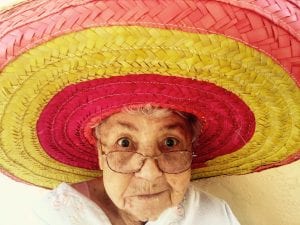What is Occupational Therapy (OT)?
Written by: Ingrid Borland, OTR/L
Wow! That is a loaded question and it would be easier to tell you what we don’t do! In grad school, it felt like we spent the first few months trying to define Occupational Therapy, because it is quite complex. Because there is so much to it, I have created a short and long version of the answer, although I urge you to read the long version to get the best breakdown.

What is an Occupational Therapist (short version)?
We OT’s work with everyone from preemie babies to 101+ years old, and help them problem-solve whatever physical or mental obstacle that is preventing them from performing every day “occupations” of life. We can do home visits, and can be found in a school, hospital, or rehab, depending on the area of specialty. Our roles can range from teaching parents how to work with their baby or child who has developmental delays, to working in a rehab (with strokes, hip replacements, etc.) after a doctor orders us, with Physical Therapy.
What is an Occupational Therapist (longer version)?
Who do we work with? Everyone! In Grad school, we are taught to work with preemies and regular babies to 101+ years old. After school, we tend to specialize in one of the four areas: Babies, Kids, Adults, or Mental Health.
What do we do? We are the problem-solvers of life! No matter who we work with, our main goal is improving people’s quality of life. We do this by making sure their mental or physical obstacles aren’t preventing them from performing everyday “occupations” of life.
What is an example of how an OT would work with a preemie baby and regular babies? Often times, there are developmental delays, sensory, or suckling issues that need problem-solving. Even if a regular baby isn’t swaddled or handled correctly, it can lead to health issues. An OT’s role is teaching the parent about how to care for the baby, and to identify developmental delays or any sensory issues they may have.

What is an example of how an OT would work with Kids? There is at least one OT in every school, and they help identify developmental delays that can interfere with the occupation of learning. Some examples of who a school OT would work with, are kids with ADHD, autism, sensory sensitivities, and even mental psychology issues. Even before kids are going to school, OT’s are visiting homes with children who have developmental delays or sensory issues that interfere with the occupation of play, eating, and self-care. Parents can also underestimate the importance of play in their child’s development. It’s not uncommon for an OT to teach parents how to encourage their child to hold and manipulate objects like blocks, Legos, and shapes, in order to improve their hand grasps and functions.

What is an example of how an OT would work with Mental Health patients? I did my field-work in Oregon State (psychiatric) Hospital, where the movie “One Flew Over the Cuckoo’s Nest” was filmed! Oregon State Hospital is nothing like that movie now, and I believe OT’s have a lot to do with the major changes. There is a big emphasis on the importance of sensory needs, and less on restraint. There were “treatment malls” in which young and old were encouraged to participate in various groups and activities (art, tai chi, meditation, sensory, education, reading, etc.) in order to “occupy” their time in a meaningful way. To motivate the residents to participate, a reward was given that could be used as currency in the treatment mall store.

What is an example of how an OT would work with in Rehabilitation centers with ages 65? I chose Rehab as a specialty because I have a big heart for the aging population. In a rehab, a doctor usually orders an OT with a Physical Therapist, to work together to help rehabilitate the individual back home safely and with more independence. We often work with hip replacements, bone fractures, stroke, dementia, heart surgeries, etc.) The big focus is on ADL’s, or Activities of Daily Living, and we OT’s teach people how to modify routines in order to decrease pain and increase independence and safety. As you can see, we are on the frontline of falls! It is no wonder I am so passionate about what I do!
How Occupational Therapy Decreases Fall Risk
Written By: Ingrid Borland, OTR/L
Increasing Fall Risk
(Why do Falls Happen?)
-
There is not enough education out there.
-
Society focuses on challenging balance
-
insurance companies focus on challenging balance
-
There is a stigma attached to using a walker and aging
Decreasing Fall Risk
(How OT Helps)
-
Occupational Therapists focus on modifying
-
People don’t typically work with an Occupational Therapist (OT) until after they fall
-
We teach all the ways falls can happen using real-life scenarios.
-
We teach you the logic behind falls and how to modify routine to decrease falls.
-
We tailor classes to all of your needs (cognitive, physical, etc).
